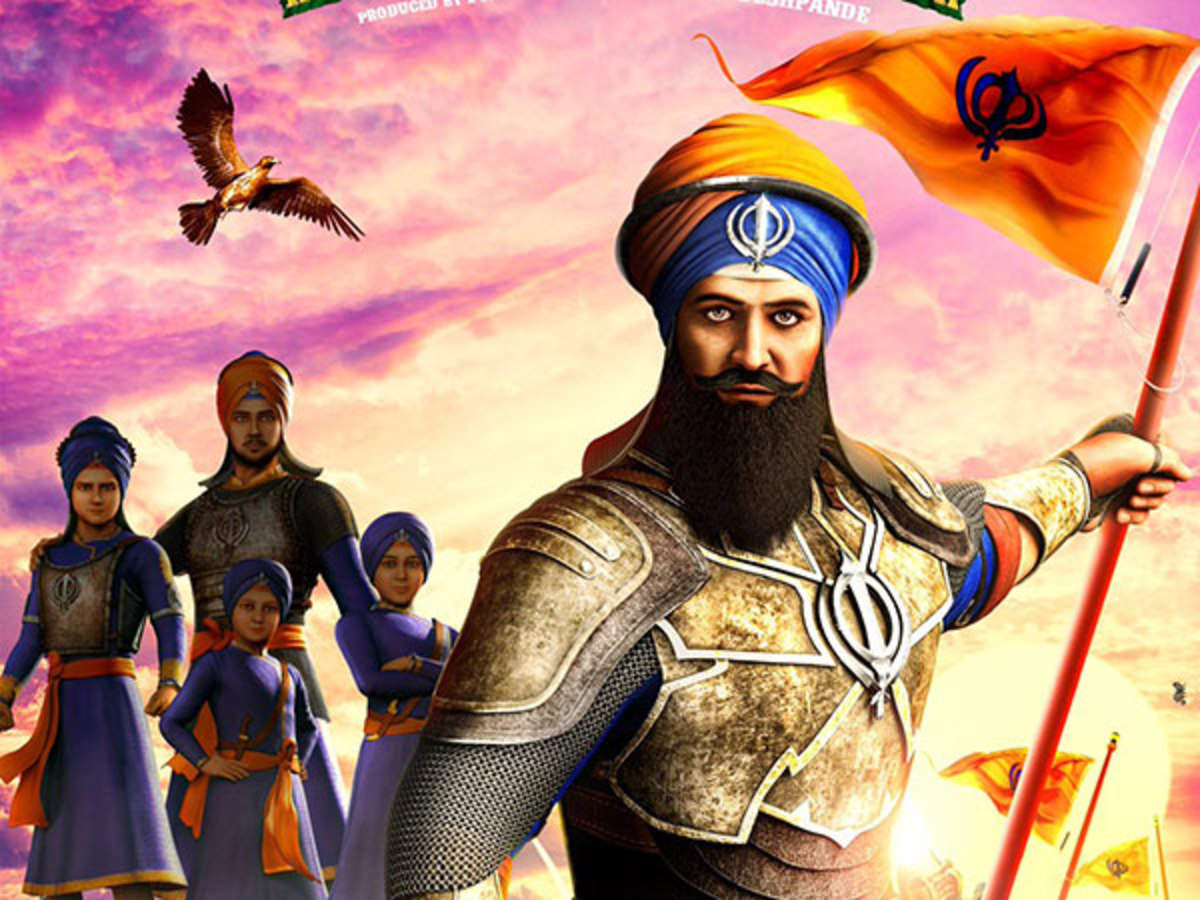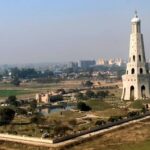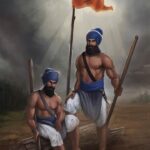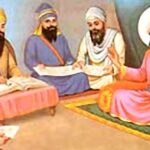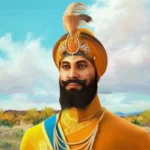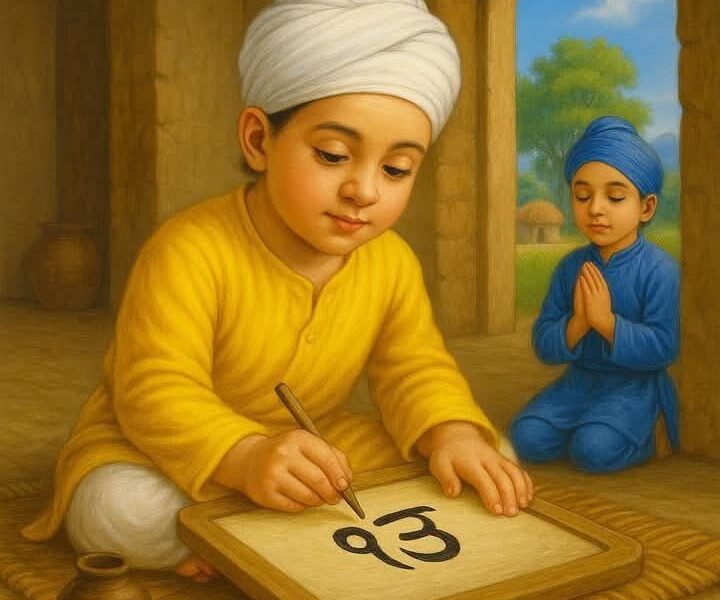Banda Singh Bahadur (born Lachman Dev) (27 October 1670 – 9 June 1716) was a Sikh warrior and Khalsa army leader. He left home at the age of 15 to become an ascetic and was given the name Madho Das Bairagi. He founded a monastery at Nnded, on the banks of the Godavari River. Guru Gobind Singh accepted an invitation to meet Bahadur Shah I in southern India in 1707, and he paid a visit to Banda Singh Bahadur in 1708. After the baptism ritual, Banda became a student of Guru Gobind Singh and was given the name Gurbaksh Singh (as mentioned in Mahan Kosh.
Banda Singh Bahadur is his popular name. The Guru blessed him with five arrows as a blessing for the battles ahead. He traveled to Khanda in Sonipat, gathered a combat force, and led the revolt against the Mughal Empire.
In November 1709, he led the sacking of the Mughal province capital of Samana.
After establishing his authority and Khalsa rule in Punjab, Banda Singh Bahadur abolished the zamindari system and handed land tillers property rights. In 1715-1716, the Mughals seized Banda Singh and tortured him to death.
Early years
The memorial to Shaheed Baba Banda Singh Bahadur is located in Chhapar Chiri, near Mohali.
Banda Singh Bahadur was born in Rajouri, India, to a Hindu family and farmer Ram Dev (now in Jammu and Kashmir). According to several sources, his father is a Rajput of the Bhardwaj gotra or a Dogra Rajput. Hakim Rai’s Ahwl-i-Lachhma Ds urf Band Shib (“Ballad of Banda Bahadur”) asserts that his family was from the Khatri Sodhi sub-caste. This claim, however, appears to have been an attempt to present him as Guru Gobind’s successor, as the previous Sikh Gurus were Sodhi’s.
Early conquests military campaigns.
Locations associated with the life of Baba Banda Singh Bahadur
After meeting Guru Gobind Singh, he marched to Khanda and defeated the Mughals in the Battle of Sonipat with the support of the Sikh army.
He defeated the Mughals in the Battle of Samana in 1709 and conquered the Mughal city of Samana (30 km southwest of Patiala).
Samana produced coins. The Sikhs gained financial stability as a result of this treasury. The Sikhs quickly took over Mustafabad (now Saraswati Nagar)and Sadaura (both places in the present Yamunanagar district, Northern eastern Haryana). The Sikhs then took over the Punjab Cis-Sutlej districts, including Malerkotla and Nahan. The Sikhs murdered Wazir Khan, the Governor of Sirhind, and Dewan Suchanand, who were responsible for the execution of Guru Gobind Singh’s two youngest sons, on May 12, 1710, in the Battle of Chappar Chiri. Sirhind was conquered two days later by the Sikhs. Banda Singh now ruled a territory stretching from the Sutlej to the Yamuna. He ordered that the farmers be granted ownership of the land and that they be allowed to live with dignity and self-respect.
Invasions by Military Forces
Banda Singh Bahadur established Mukhlisgarh as his capital village. He subsequently renamed it Lohgarh (steel stronghold) and established his mint there. “Struck in the City of Peace, illustrating the splendor of civic life, and the ornament of the glorious throne,” the coin said of Lohgarh.
For a half-year period, he founded a state in Punjab. Sikhs were sent to Uttar Pradesh by Banda Singh, and they took over Saharanpur, Jalalabad, Muzaffarnagar, and other neighboring areas.
During his tenure, revolutionary Banda Singh Bahadur is credited with putting an end to the Zamindari and Taluqdari systems and granting farmers ownership of their land. It appears that all classes of government officials were addicted to extortion and corruption, and the entire regulatory and order system was undermined.
According to local legend, inhabitants from the Sadaura neighborhood came to Banda Singh to complain about their landlords’ abuses. Banda Singh gave Baj Singh the order to begin fire on them. The people were perplexed by his peculiar response to their representation and inquired as to what he meant. He informed them that despite being thousands in number, they deserved no better treatment because they allowed themselves to be cowed down by a handful of Zamindars. In the Battle of Sadhaura, he overcame the Sayyids and Shaikhs.
Banda Singh Bahadur was imprisoned in an iron cage, and the remaining Sikhs were chained. The Sikhs were marched to Delhi alongside 780 Sikh prisoners, 2,000 Sikh heads hung on spears, and 700 cartloads of murdered Sikh heads used to terrorize the populace. They were imprisoned in the Delhi fort and forced to abandon their faith and convert to Islam.
The captives stayed still. These non-converts were sentenced to death because they refused to convert. Every day, 100 Sikh troops were dragged from the fort and executed in public. This lasted around seven days. He was commanded to murder his four-year-old son, Ajai Singh, but he refused. As a result, Ajai Singh was assassinated, his heart was removed, and it was shoved into Banda Bahadur’s mouth. His resolve, however, did not break under torture, and he was martyred. After three months of confinement,[64] Banda Singh’s eyes were gouged out, his limbs chopped, his skin stripped, and he was slain on June 9, 1716.
